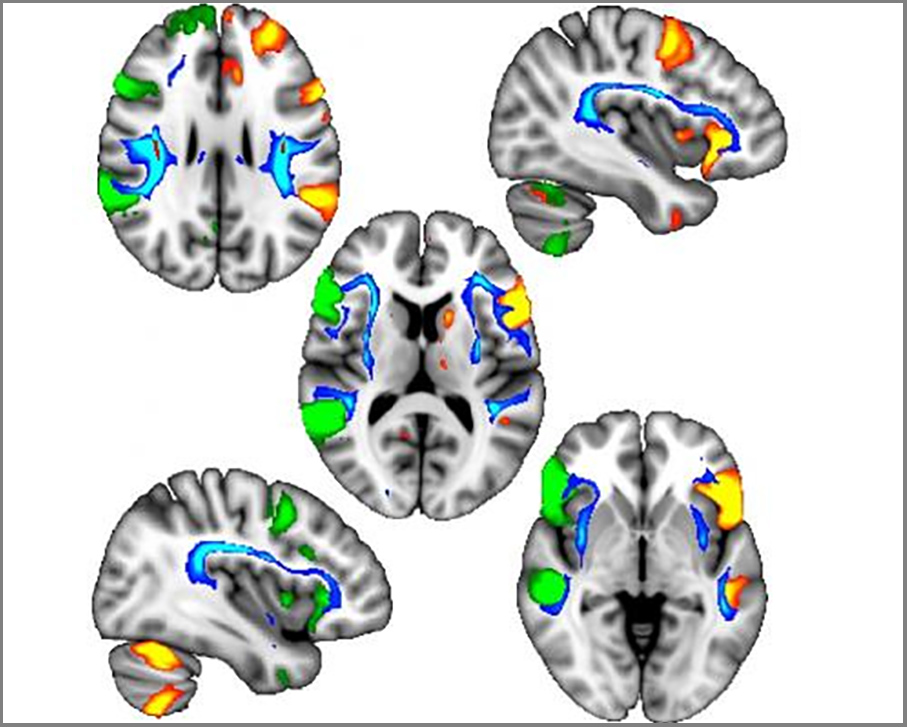A University of Oxford-led research team has identified genome regions and variants that are associated with left-handedness, and linked their effects with brain architecture, and in particular with connections between language-related areas of the brain. The study, reported in Brain, also linked the genetics of left-handedness with a lower risk of Parkinson’s disease, and a higher incidence of schizophrenia, although these findings will need verification in much larger studies.
“Throughout history, left-handedness has been considered unlucky, or even malicious,” noted Dominic Furniss, PhD, associate professor at the University of Oxford, Nuffield department of orthopedics, rheumatology, and musculoskeletal science. “Indeed, this is reflected in the words for left and right in many languages. For example, in English “right” also means correct or proper; in French “gauche” means both left and clumsy. Here we have demonstrated that left-handedness is a consequence of the developmental biology of the brain, in part driven by the complex interplay of many genes. It is part of the rich tapestry of what makes us human.” Furniss is co-senior author of the team’s published paper, which is titled, “Handedness, language areas and neuropsychiatric diseases: insights from brain imaging and genetics.”
“One of the most remarkable features of human motor control is that 90% of the population has had a preference for using their right hand over the left since at least the Paleolithic period,” the authors explained. “… this skew in distribution of handedness is a uniquely human trait.” Studies to date haven’t equivocally found any link between brain structure and handedness, but have married the pattern of language function in the brain and handedness, “… with left-handers showing more bilateral or right-hemisphere language activation,” the researchers noted.
What isn’t yet understood is the extent to which genes are implicated in handedness. Left-handedness does run in families, and studies in twins have suggested that handedness may have a heritability of 25%, but which genes may be involved in the general population isn’t known.
For their study reported in Brain, the researchers carried out a genome-wide association study involving data from 356,567 participants—including 38,322 left-handers—in the UK Biobank, a prospective cohort of some 500,000 individuals, including genetic data, medical records, lifestyle questionnaires, and cognitive measures. Results form the GWAS identified four gene regions that were linked with left-handedness, three of which were associated with proteins involved in brain development and structure. In particular, these proteins were related to microtubules, which are part of a cell’s cytoskeleton.
Detailed brain images from approximately 10,000 of the participants indicated that the handedness-related gene variants were linked with differences in brain structure in white matter tracts, which contain the cytoskeleton of the brain that joins language-related regions. “Many animals show left-right asymmetry in their development, such as snail shells coiling to the left or right, and this is driven by genes for cell scaffolding, what we call the cytoskeleton,” explained joint senior study author Gwenaëlle Douaud, PhD, from the Wellcome Centre for Integrative Neuroimaging at the University of Oxford. “For the first time in humans, we have been able to establish that these handedness-associated cytoskeletal differences are actually visible in the brain. We know from other animals, such as snails and frogs, that these effects are caused by very early genetically-guided events, so this raises the tantalizing possibility that the hallmarks of the future development of handedness start appearing in the brain in the womb.”
The researchers say the functional connections demonstrate that left-handers have “a stronger connectivity between right and left (homologous) language networks,” and “a weaker connectivity between the right homologous language network and the default-mode network (DMN) and salience network.” The results hint that left-handers may be better at some verbal tasks, but this needs to be studied in larger dedicated studies, the authors noted.
“We discovered that, in left-handed participants, the language areas of the left and right sides of the brain communicate with each other in a more coordinated way,” commented Akira Wiberg, PhD, a Medical Reseach Council fellow at the University of Oxford, who carried out the analyses. “This raises the intriguing possibility for future research that left-handers might have an advantage when it comes to performing verbal tasks, but it must be remembered that these differences were only seen as averages over very large numbers of people and not all left-handers will be similar.”
Handedness was also linked to predisposition to neuropsychiatric disorders, supports the “plethora of literature” that already points to an association between left-handedness and psychiatric disorders, and particularly schizophrenia, the authors stated. Their results found a statistically significant positive association between left-handedness and schizophrenia, and a strong negative relationship between one of the left-handedness genetic variants and Parkinson’s disease.
“While replication in a large, well-powered independent cohort is needed to confirm these associations, it is striking that the associated loci are also strongly positively correlated with schizophrenia and negatively correlated with Parkinson’s disease,” they wrote. “In particular, our most significant SNP, rs199512, was not only directly associated with mental health phenotypes and familial history of Parkinson’s disease in the UK Biobank participants, but also with structural connectivity measures in white matter tracts connecting language-related brain areas.”
The researchers say that their findings will increase our understanding of human handedness, and offer mechanistic insights into the correlations between chirality and microtubules in the brain. The findings also suggest “an overlap of genetic architecture between handedness and certain neurodegenerative and psychiatric phenotypes,” they concluded. “We suggest that these genetic variants contribute to neurodevelopmental lateralization of brain organization, which in turn influences both the handedness phenotype and the predisposition to develop certain neurological and psychiatric diseases.”



